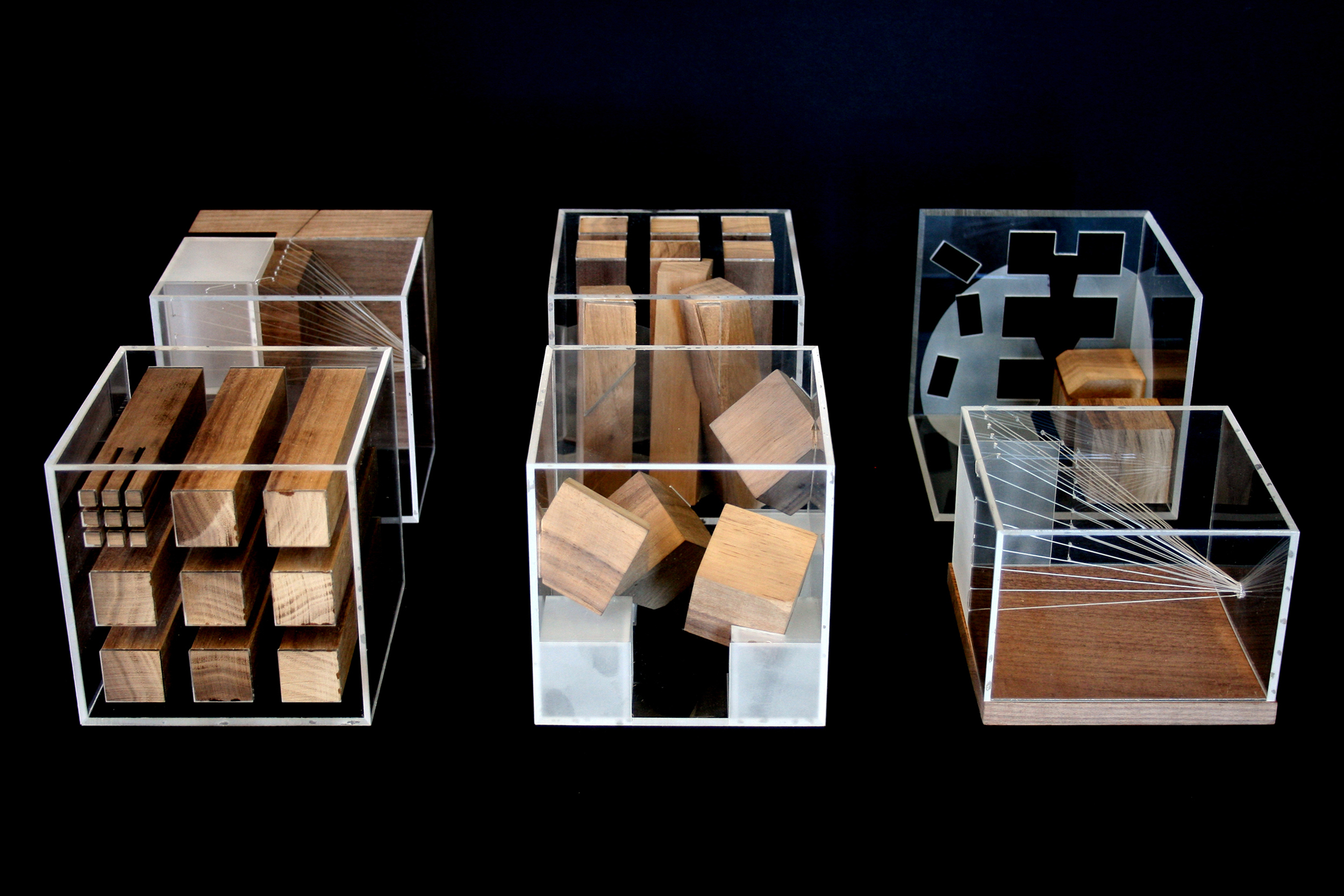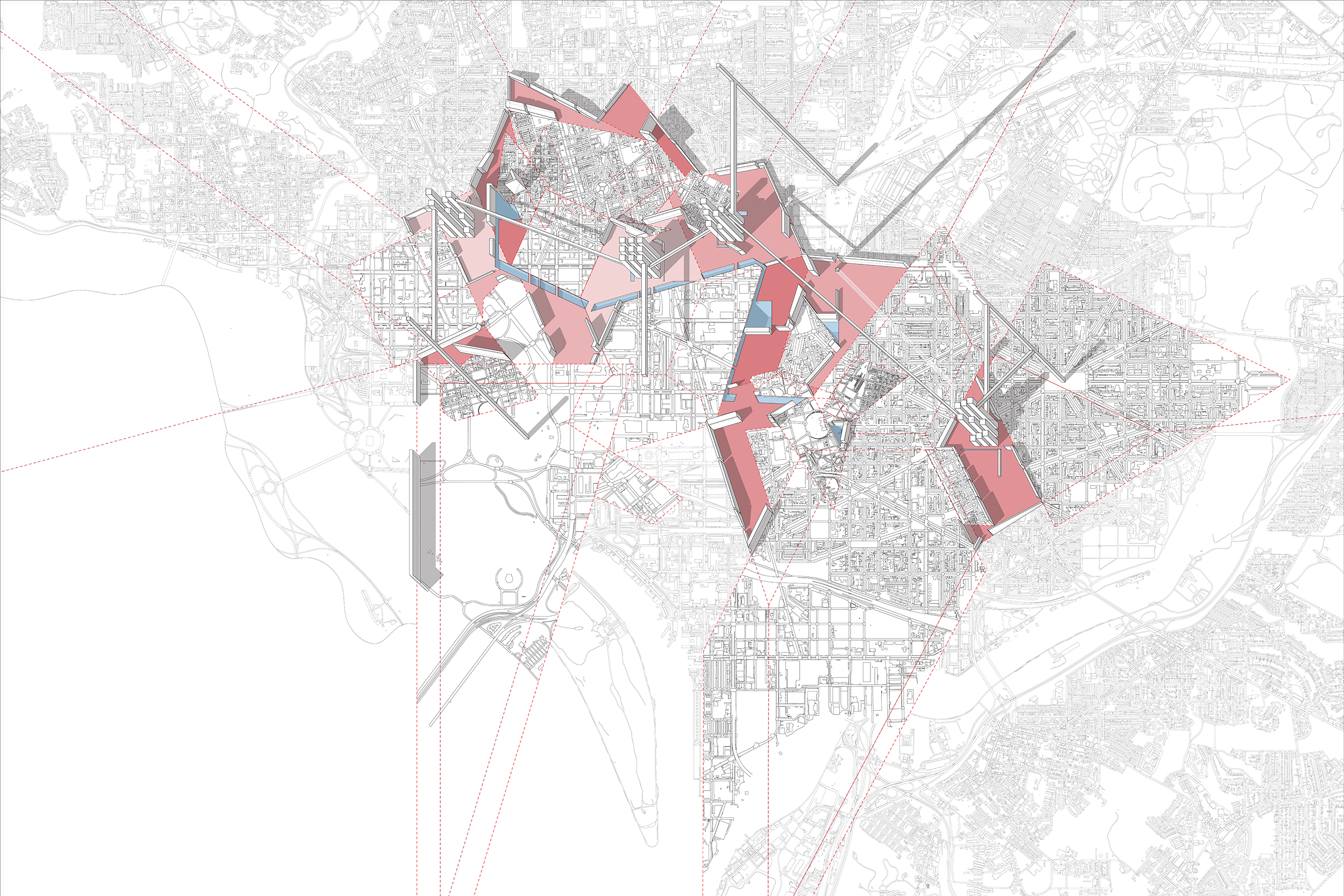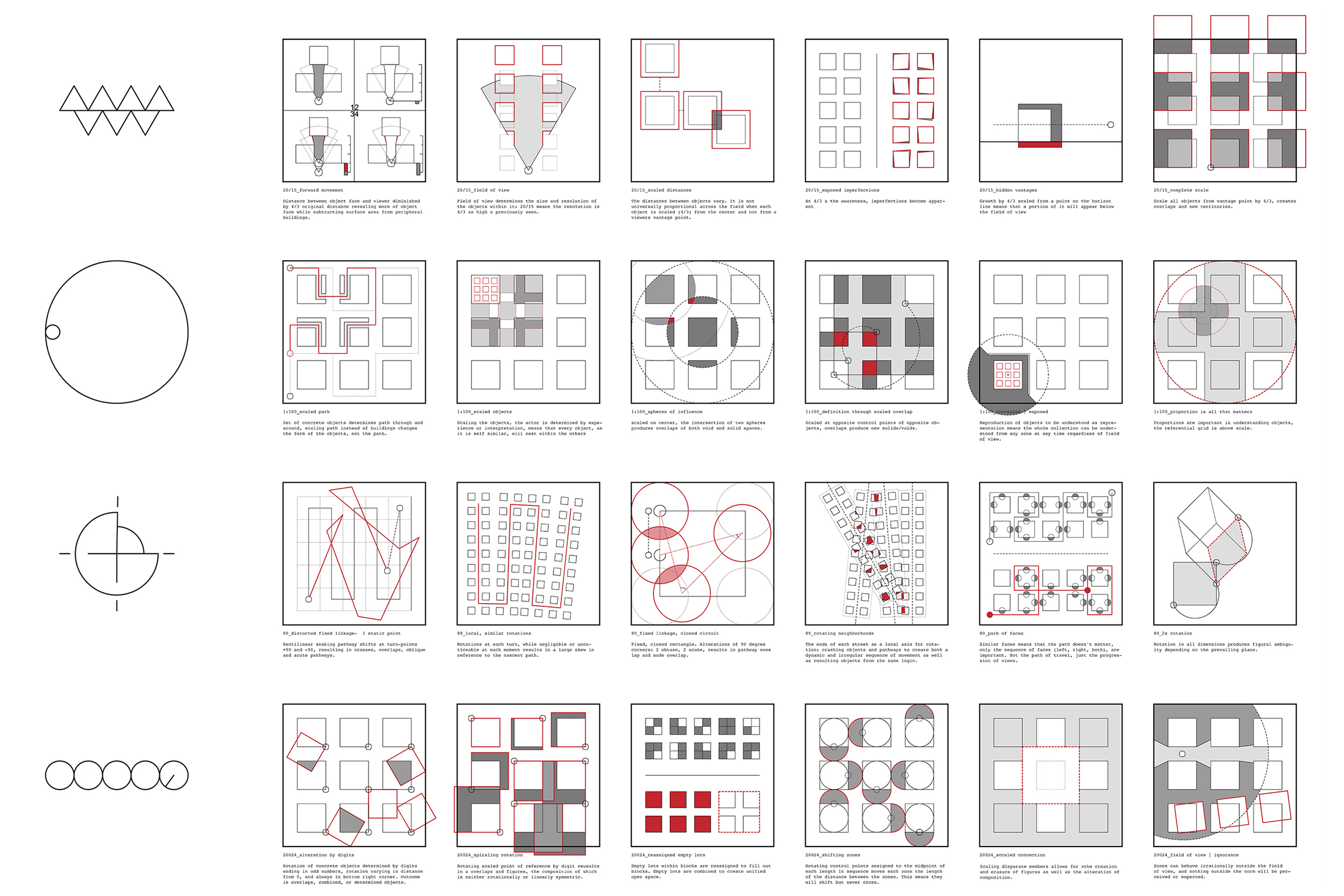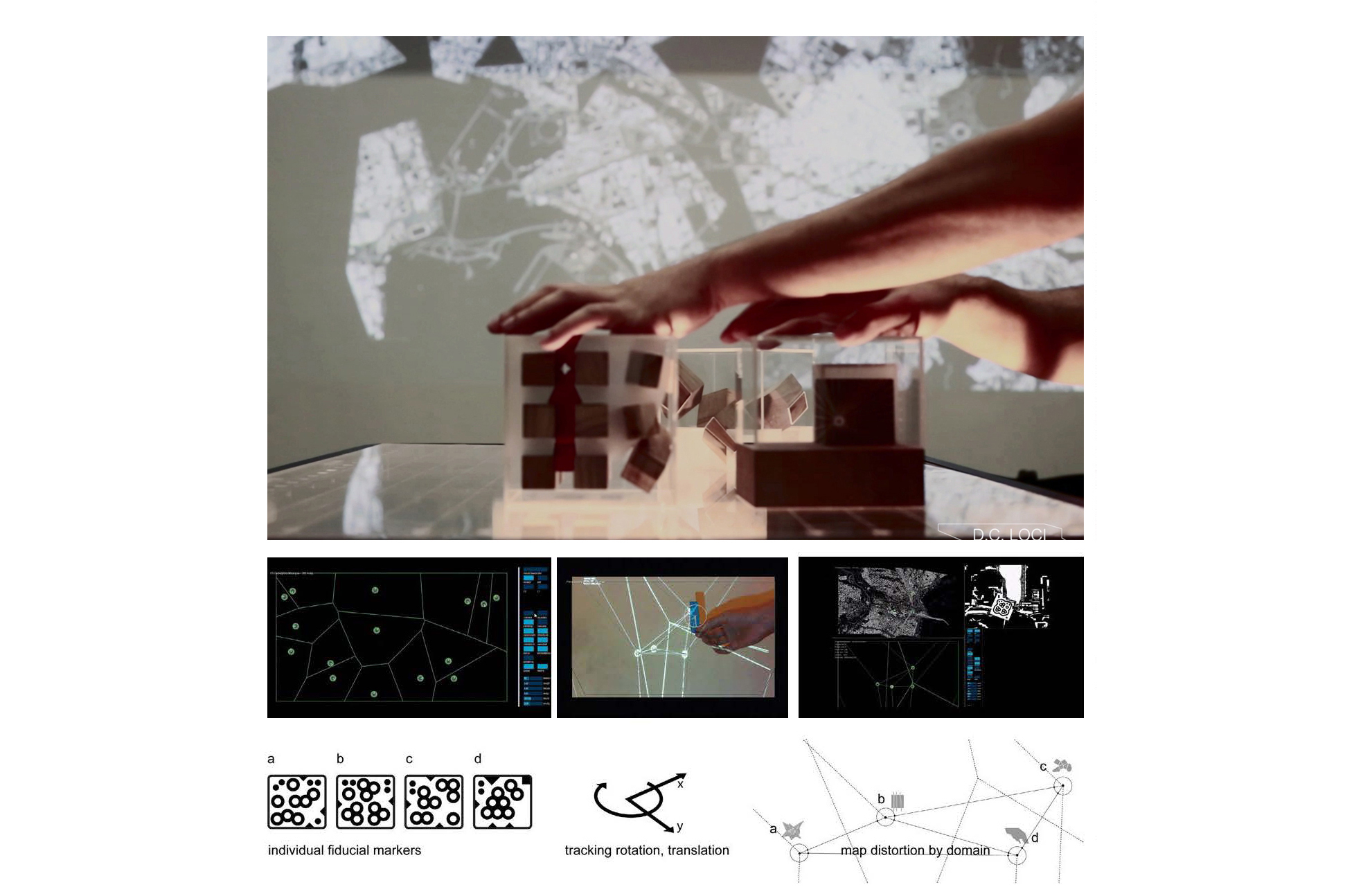




DC LOCI
The masterplan of Washington DC as conceived by L'Enfant is a network of loci - seats of power connected by grand boulevards - overlaid on a grid. These avenues linking places of government advocate for form as a device of civic control and order.
DC Loci, one of a tripartite urban study, renovates this network of bisecting boulevards in two ways. Firstly, by reclaiming its motility and organization as fixed linkages, multiple urban morphologies may be activated as a MultiAgent System, Secondly, new social positions in gender, race, age, economics and nonhuman species are claimed as loci in an accompanying short film.
As the new loci - made of architectural elements - are maneuvered, their positions and rotations create sweeping transformations on the city, producing open spaces for public assembly and inclusion
Project: Mariana Ibañez, Simon Kim Design Team: Ben Ruswick, Kordae Henry, Andrew Gardner, Michael Wetmore